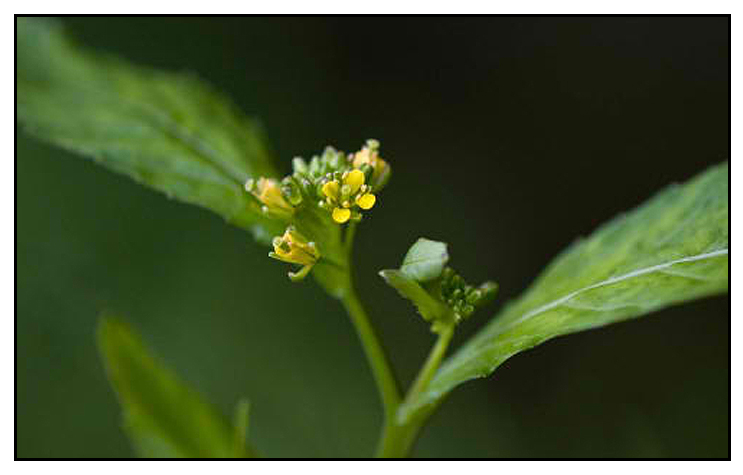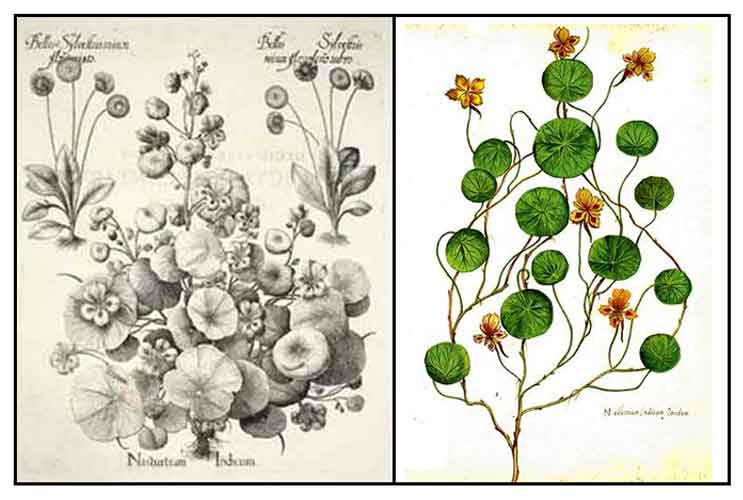
Family • Brassicaceae
Sabi
Rorippa indica (L.) Hiern
INDIAN CRESS
Wu ban han cai
| Scientific names | Common names |
| Cardamine atrovirens (Homem.) Kuntze | Alalahia (Ibn.) |
| Cardamine glandulosa Blanco | Apopo (Bon.) |
| Cardamine lamontii Hance | Gandei (Bon.) |
| Clandestinaria indica (L.) Spach | Gelgelai (Bon.) |
| Nasturtium apetalum A.Chev. | Gilgiloi (Ig.) |
| Nasturtium atrovirens (Homem.) D.C. | Lampuka (Ilk.) |
| Nasturtium diffusum D.C. | Sabi (Bag.) |
| Nasturtium heterophyllum D.Don. | Undi (If.) |
| Nasturtium indicum (Linn.) D.C. | Wu ban han cai (Chin.) |
| Nasturtium montanum Wall. ex Hook. f. & Thomson | Indian cress (Engl.) |
| Nasturtium montanum (Nutt.) Kuntze | Variable leaf yellow cress (Engl.) |
| Nasturtium nilolicum Boiss. | |
| Nasturtium sinapis (Burm.f.) O.E. Schulz | |
| Radicula indica (L.) J.M. Macoun | |
| Rorippa atrovirens (Homem.) Ohwi & H. Hara | |
| Radicula montana (Wall. ex Hook.f.&Thomson) Small | |
| Rorippa indica (L.) Hiern | |
| Sisymbrium atrovirens Homem. | |
| Sisymbrium indicum Linn. | |
| Sisymbrium sinapis Burm. f. | |
| Nasturtium indicum (L.) DC. is a synonym of Rorippa indica (L.) Hiern The Plant List | |
| Rorippa indica (L.) Hiern is an accepted name. The Plant List | |
| Other vernacular names |
| ASSAMESE: Gonga mula, Ganga mula, Bon behar, Bon sariyoh. |
| BENGALI: Ban sarisha. |
| CHINESE: Han cai, Ye you cai, Jiang jian dao cao, Qing ming cai, San jei tsai. |
| HINDI: Chamsuru. |
| JAPANESE: Inu garashi. |
| KOREAN: Gae gat naeng. |
| MALAYALAM: Kattukadugu. |
| TELUGU: Aaku mullangi. |
| THAI: Phàk kàat náam dok lueng (Phakkat nam dok lueang). |
Updated August 2018 / August 2015
![]()
 |
| IMAGE SOURCE: Photograph / Rorippa indica / Inugarash / © wildplantsshimane.jp / click on photo to go to source page / Wild Plants in and around Shimane |
| OTHER IMAGE SOURCE: Nasturtium indicum / Besler, Basil / Nuremberg, 1613 / Ursus Books |
| Additional
Sources and Suggested Readings (1) Rorippa dubia (Pers.) H. Hara (accepted name) / Chinese names / Catalogue of Life, China (2) Traditional Phytotherapy among the Nath People of Assam / Mithun Sikdar and Uzzal Dutta / Ethno-Med., 2(1): 39-45 (2008) (3) Sorting Rorippa names / /Maintained by: Michel H. Porcher / MULTILINGUAL MULTISCRIPT PLANT NAME DATABASE / Copyright © 1995 - 2020 / A Work in Progress. School of Agriculture and Food Systems. Faculty of Land & Food Resources. The University of Melbourne. Australia. (4) Rorippa indica (L.) Hiern / Synonyms / The Plant List (5) Profiling of Glucosinolates and Flavonoids in Rorippa indica (Linn.) Hiern. (Cruciferae) by UHPLC-PDA-ESI/HRMSn / Long-Ze Lin *, Jianghao Sun, Pei Chen, Ren-Wei Zhang , Xiao-E Fan,, Lai-Wei Li, and James M. Harnly / J. Agric. Food Chem., 2014, 62 (26), pp 6118–6129 / DOI: 10.1021/jf405538d (6) Roripamine, a sulphonylalkyl amine from Rorippa indica / Yun-Lian Lina, Wei-Yu Tsai∗, Yueh-Hsiung Kuo / Phytochemistry, Volume 39, Issue 4, July 1995, Pages 919–921 / doi:10.1016/0031-9422(95)00005-R (7) GC – MS Determination of Bioactive Components of Rorippa indica L. / P. Ananthi, B. D. Ranjitha Kumari / International Journal of ChemTech Research, Vol.5, No.4, pp 2027-2033, April-June 2013 (8) ETHNOMEDICINAL USES OF SOME WEEDS OF UTTAR PRADESH, INDIA / Arjun Prasad Tiwari, Bhavana Joshi & A.A. Ansari / Researcher 2012;4(7) (9) A preliminary study of nectar production of the field cress,Rorippa indica , in relation to the age of its flowers / Kazuyuki Muraoka, Mamoru Watanabe / Ecological Research, April 1994, Volume 9, Issue 1, pp 33-36 (10) Indigenous Knowledge on Utilization of plant Biodiversity for Treatment and Cure of diseases of Human beings in Nagaland, India: A case study / Zhasa N.N., Hazarika P and Tripathi Y.C. / International Research Journal of Biological Sciences, Vol. 4(4), 89-106, April (2015) (11) Functional characterization of Rorippa indica defensin and its efficacy against Lipaphis erysimi / Sarkar Poulami, Jana Jagannath, Chatterjee Subhrangshu, Sikdar Samir Ranjan / TIB: Springer Plus, 5(1): pp 1-12 / DOI: https://doi.org/10.1186/s40064-016-2144-2 |
| It is not uncommon for links on studies/sources to change. Copying and pasting the information on the search window or using the DOI (if available) will often redirect to the new link page. |
• |
 |
• |


 Distribution
Distribution